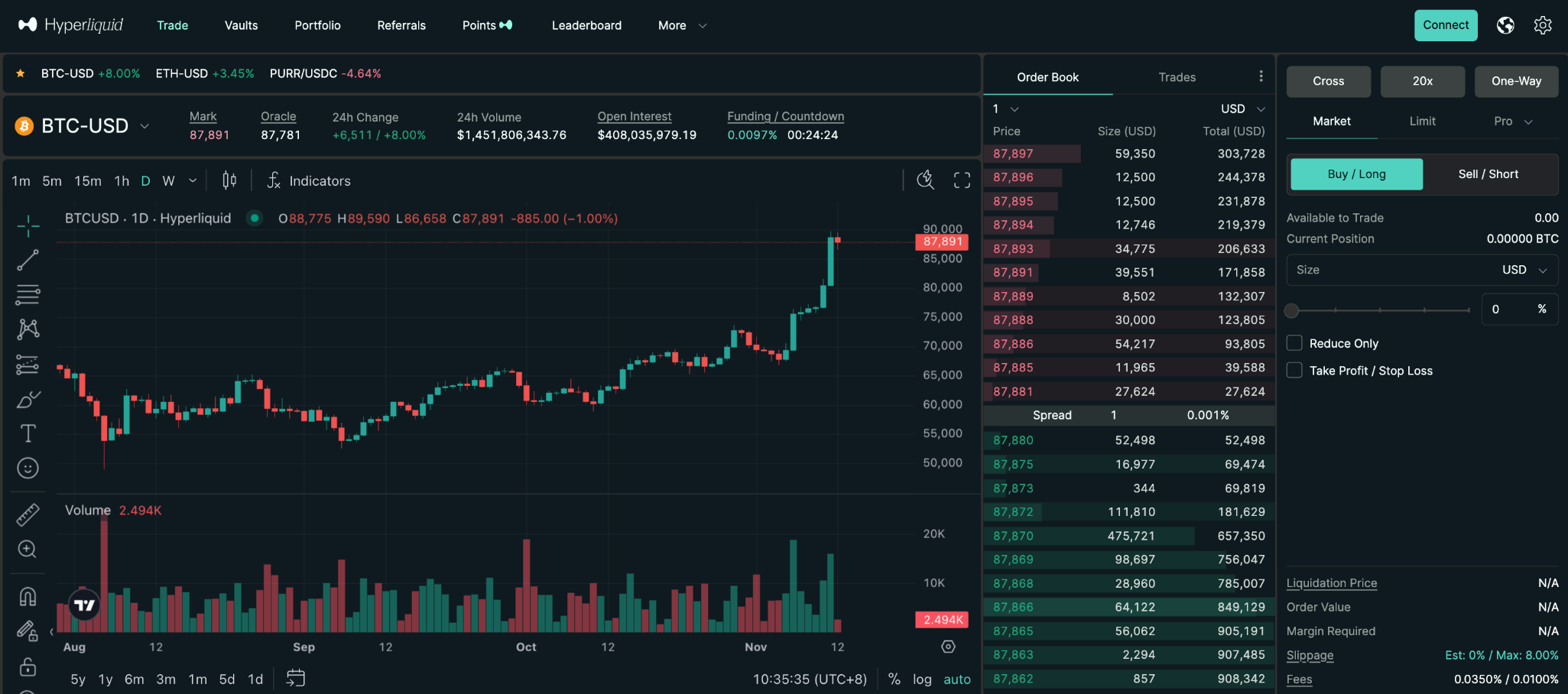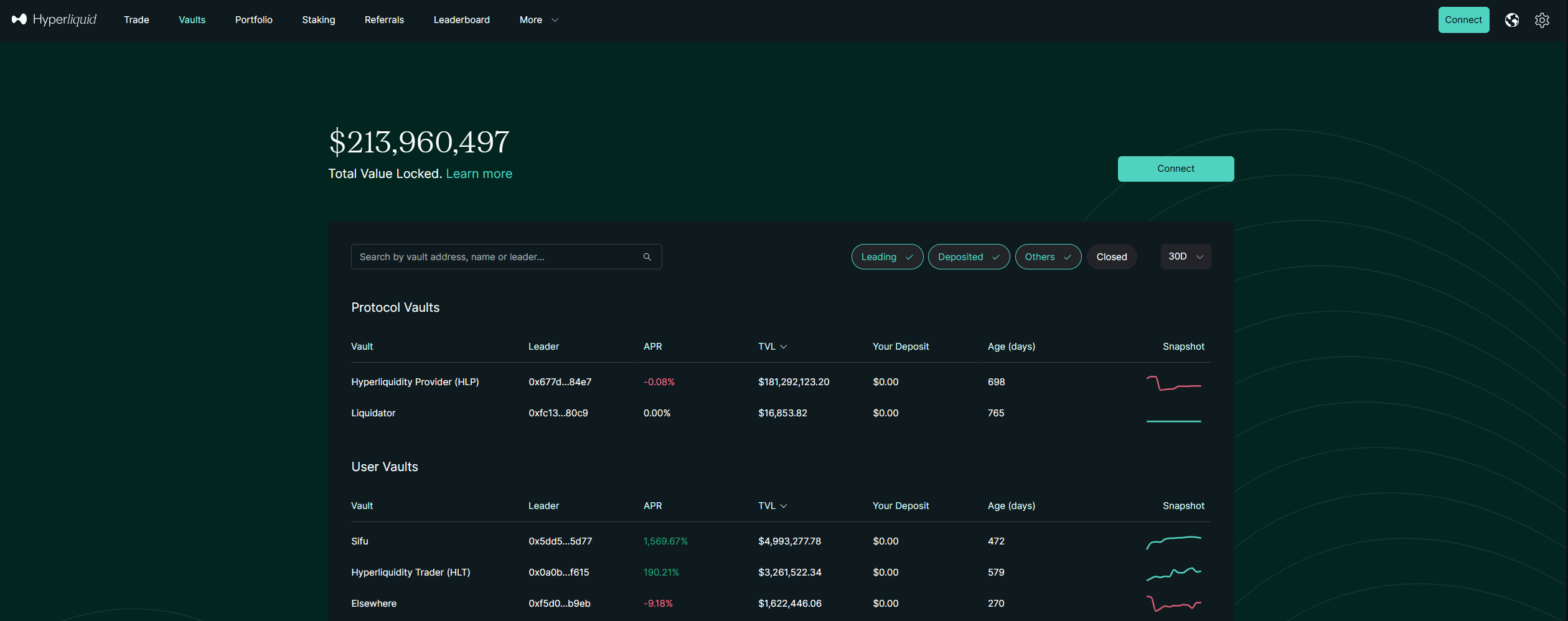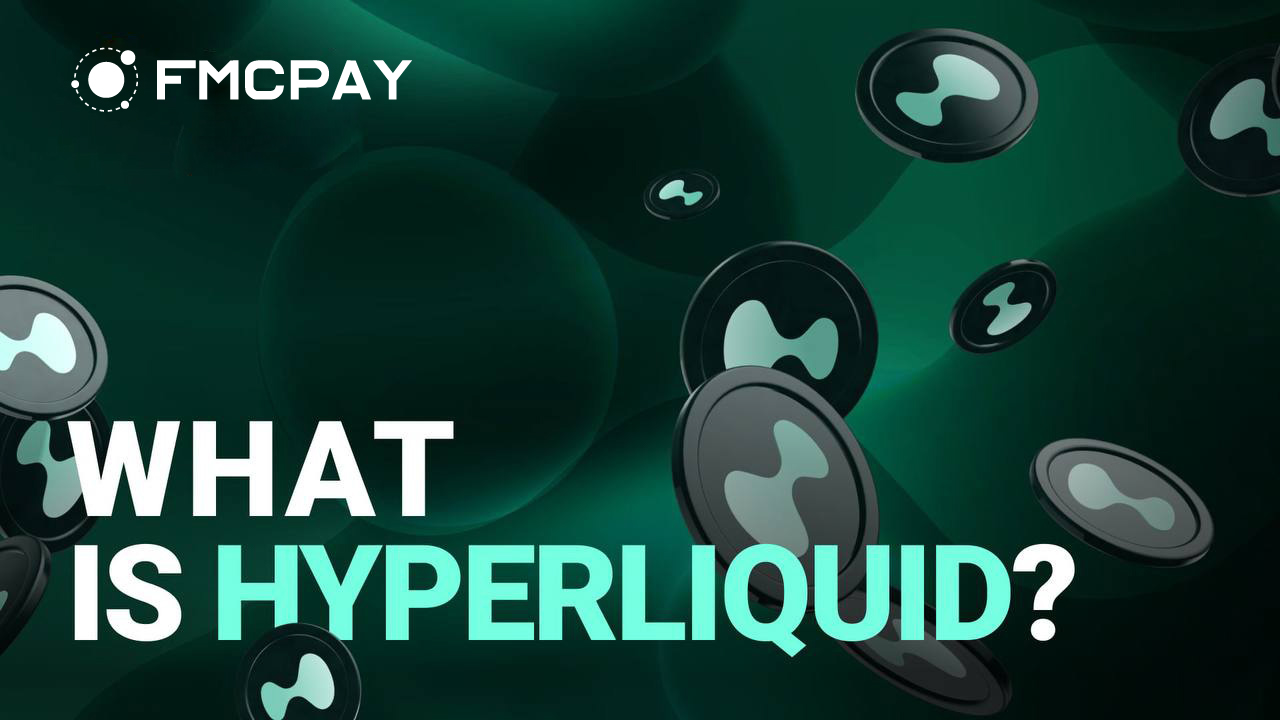Hyperliquid is shaking up DeFi with its innovative approach to trading and blockchain technology. In this guide, we’ll explore what is Hyperliquid, its ecosystem, tokenomics, and everything you need to know about the project.
1. What Is Hyperliquid?
Hyperliquid is a cutting-edge decentralized perpetual exchange (DEX) built on its own custom Layer 1 blockchain, offering smart contract capabilities while maintaining exceptional performance. The platform specializes in perpetual futures trading, allowing users to speculate on cryptocurrency prices without holding the underlying assets.
With a market capitalization of approximately $8.92 billion as of February 2025, Hyperliquid has established itself as a significant player in the DeFi derivatives space. The project has taken a distinctly community-focused approach, rejecting traditional venture capital funding in favor of allocating 70% of its tokens directly to users and redistributing all revenue back to the community.

By bridging the gap between centralized finance (CeFi) and decentralized finance (DeFi), Hyperliquid addresses traditional challenges like inefficient order matching and high latency. This creates a seamless, high-speed trading experience specifically tailored for modern DeFi users who demand both performance and decentralization.
2. What Makes Hyperliquid Stand Out?
One of the main reasons that sets Hyperliquid apart from other DEXs is its airdrop token distribution. On 29 November 2024, Hyperliquid made waves in the crypto community by airdropping its native token, $HYPE, to over 90,000 users. This event was not only notable for the sheer number of recipients but also for the generosity of the token allocation.
What is Hyperliquid if not a community-focused exchange? By distributing 70% of its total tokens to users and reinvesting all platform revenue back into the community, Hyperliquid has established itself as a decentralized exchange that places its users at the heart of its ecosystem.
This approach fosters a strong sense of ownership and participation, helping the platform grow organically through active user involvement.
So what is Hyperliquid’s impact on its user base? According to data from DappRadar, approximately 60% of airdrop recipients were still holding their tokens three months after distribution. CoinMetrics reported that the platform trading volume surged by approximately 340% in the three weeks following the airdrop announcement.
By prioritizing community through this unprecedented token distribution, Hyperliquid transformed from a promising DEX into one of DeFi’s most influential protocols.
3. How Does Hyperliquid Work?
Understanding what is Hyperliquid and its operational mechanics provides insight into its efficiency and reliability as a decentralized trading platform.
3.1. Perpetual Hyperliquid Order Book
A key feature of Hyperliquid is its fully on-chain perpetual order book exchange. Unlike many DEXs that rely on automated market makers (AMMs), Hyperliquid’s on-chain order book system enables transparent trading with minimal latency, creating a trading experience similar to that of centralized exchanges (CEXs).
As of February 2025, Hyperliquid can process up to 100,000 orders per second, rivaling the speed of centralized exchanges. Orders are matched using a price-time priority mechanism, ensuring fair execution for all market participants.

3.2. HyperBFT Algorithm
Do you know what is Hyperliquid’s unique feature? At its core, Hyperliquid uses a proprietary consensus algorithm called HyperBFT to ensure rapid transaction processing. This is a tuned version of the Tendermint consensus mechanism implementing Byzantine Fault Tolerance (BFT).
HyperBFT allows 75% of the network to reach consensus despite potential malicious nodes, while optimizing for near-instant trade settlement.
3.3. Margining System
What is Hyperliquid’s approach to margining? The platform features a decentralized clearinghouse to manage users’ margin balances and positions efficiently. It supports both cross-margin and isolated-margin trading. With cross-margin, traders can allocate collateral across multiple positions, while isolated-margin dedicates specific collateral to each trade, reducing liquidation risks for other holdings. This system offers traders increased flexibility and improved risk management.
3.4. Pricing Mechanism
To ensure accurate pricing, Hyperliquid relies on a decentralized oracle system, where validators update spot prices from major exchanges every three seconds. This ensures price integrity and helps mitigate risks of price manipulation.
The system uses these price updates to calculate funding rates, margin requirements, and liquidation processes, providing a robust framework for accurate and fair trading.
4. The Hyperliquid Ecosystem
The Hyperliquid ecosystem is built on cutting-edge technology, offering unique solutions to the world of decentralized finance. Understanding what is Hyperliquid and its ecosystem can help investors and traders alike leverage its innovative features.

4.1. Hyperliquid L1 Blockchain
The project has developed its own Layer 1 blockchain based on the Cosmos Tendermint toolkit and operates on a Proof of Stake consensus mechanism.
So what is Hyperliquid L1? This is a highly customizable and optimized blockchain to run an efficient perpetual DEX, rather than supporting general-purpose smart contracts. This focus ensures maximum performance and throughput, positioning Hyperliquid as a powerful competitor to centralized exchanges (CEXs).
For example, Hyperliquid L1 operates similarly to dYdX’s chain, which is specifically designed to support its perpetual DEX. You can check the Hyperliquid blockchain explorer here. Many other Layer 1 blockchains, such as Ethereum, BNB Chain, and Solana, support smart contracts for general purposes.
The Hyperliquid L1 also allows order-book system to run fully on-chain, removing reliance on centralized entities. Hyperliquid recognized that other derivative DEXs relying on off-chain order books could manipulate order results, leading to a lack of transparency for users.
Additionally, Hyperliquid L1 supports a high throughput of 20,000 TPS, including order placing, cancellations, and liquidations, with an average network latency of just 0.2 seconds. This puts it over 20 times faster than Tendermint, which only processes up to 1,000 TPS.
4.2. Hyperliquid Perpetual DEX
Hyperliquid’s perpetual DEX allows users to long/short various assets with leverage up to x50. The platform features several essential tools, including Trade, Vault, Portfolio, Referrals, and Points, designed to enhance the trading experience. The interface is user-friendly and makes it easy to view tokens categorized by sectors like AI, Layer 1, and DeFi.
A special feature of Hyperliquid is the Pre-launch section, where tokens that haven’t yet been listed on any CEX or DEX can be traded. Understanding what is Hyperliquid and how its features work is key to navigating the platform’s advanced features and maximizing trading opportunities.
4.3. The Hyperliquidity Provider (HLP)
Before understanding what is Hyperliquid Provider, we need to know about the concept of “Vault”. In other DEX platforms, a Vault is often referred to as a liquidity pool where users deposit assets to earn profits. However, in Hyperliquid, the Vault is a place where users’ funds can automatically trade based on the orders within the Vault, similar to Copy Trading on CEXs.
By depositing funds into a Vault, users can earn a share of the profits or potentially incur losses if the long/short positions in the Vault perform poorly. If there are specific traders that users admire, they can deposit funds into their Vault to gain exposure to their trading strategies.

For example, if you deposit 100 USDT into a Vault with a total deposit of 10,000 USDT, you own 1% of the assets in the Vault. Over time, as long/short positions become more favorable and the Vault’s value increases to 20,000 USDT, you can withdraw funds to make a profit. If you withdraw 200 USDT (1% of the Vault), you will receive 190 USDT after a 10 USDT fee is deducted for the Vault creator. However, this amount can vary due to slippage and withdrawal fees.
The Hyperliquidity Provider (HLP) is a Vault created by Hyperliquid itself for market-making (MM) activities, acting as a trader on the platform. Users can deposit funds into an HLP Vault to ensure safety, or choose Vaults created by individual traders.
By understanding what is Hyperliquid Provider, users learn a unique way to earn profits based on market movements. The HLP plays a crucial role in facilitating liquidity and market efficiency within the Hyperliquid ecosystem.
4.4. Hypurr.fun
Hypurr.fun is another innovative product from Hyperliquid, providing a platform where users can easily create and trade memecoins. If you’re wondering what is Hyperliquid, it’s a cutting-edge perpetual DEX, and Hypurr.fun expands its ecosystem with a unique approach to memecoin trading. Unlike similar platforms like pump.fun, Hypurr.fun operates entirely through a Telegram Bot, with no need for a website.
Hypurr.fun is another innovative product from Hyperliquid, providing a platform where users can easily create and trade memecoins. If you’re wondering what is Hyperliquid, it’s a cutting-edge perpetual DEX, and Hypurr.fun expands its ecosystem with a unique approach to memecoin trading. Unlike similar platforms like pump.fun, Hypurr.fun operates entirely through a Telegram Bot, with no need for a website.
The platform uses a Bonding Curve model, which helps determine the relationship between the asset’s supply and price, reducing the risk of rug pulls. Additionally, Hypurr.fun features an Auction system for naming memecoins before they are listed on Hyperliquid, ensuring that only tokens with a target market cap reach the platform.
5. The HYPE Tokenomics
The HYPE token is the native utility token of the Hyperliquid ecosystem, serving multiple essential functions across the platform. Understanding what is Hyperliquid and its tokenomics is crucial for anyone looking to grasp the role it plays in the overall Hyperliquid ecosystem.
Below, we’ll break down the critical aspects of HYPE tokenomics, including its distribution, utility, and role within Hyperliquid’s decentralized exchange (DEX).
Token Metrics:
|
Token Name |
Hyperliquid |
|
Ticker |
HYPE |
|
Contract Address |
0x0d01dc56dcaaca66ad901c959b4011ec |
| Max Supply |
1.000.000.000 HYPE |
Token Distribution:
The distribution of the HYPE token is designed to incentivize various participants in the Hyperliquid ecosystem, including early adopters, community members, core team members, and the Hyper Foundation. Here’s a closer look at how the 1 billion HYPE tokens are distributed:
- Genesis Distribution (31%): 310 million tokens were airdropped to early Hyperliquid users based on their points, fully liquid at launch.
- Future Emissions & Community Rewards (38.888%): Approximately 388.88 million tokens reserved for future incentives and community engagement initiatives.
- Core Contributors (23.8%): 238 million tokens allocated to the team, with a 1-year lockup before vesting begins, primarily between 2027 and 2028.
- Hyper Foundation (6%): 60 million tokens designated for the Hyper Foundation’s operational expenses.
- Community Grants (0.3%): 3 million tokens allocated for community-driven projects and grants.
- HIP-2 Allocation (0.012%): 120,000 tokens set aside for specific improvement proposals.
6. Controversy Around Hyperliquid
In March 2025, Hyperliquid faced a scandal due to a market manipulation incident involving the JELLY token. An unidentified trader opened a 6 million JELLY short position with leverage through Hyperliquid’s perpetual futures contracts. Simultaneously, the trader aggressively purchased JELLY on various decentralized exchanges, causing its price to skyrocket.
This led to the liquidation of their own short position, transferring the toxic position to Hyperliquid’s Liquidity Pool (HLP). As JELLY’s price continued to rise, the HLP faced potential losses nearing $230 million.

In response, Hyperliquid’s validator group held an emergency meeting and voted to delist JELLY perpetual futures, intervening with a rollback to close 392 million JELLY short positions at $0.0095. This action not only averted a massive loss but also secured a net profit of $703,000 for the HLP.
However, Hyperliquid’s intervention sparked criticism regarding its commitment to decentralization. Critics argued that the platform’s ability to unilaterally close positions and override oracle prices contradicted the principles of DeFi. Bitget CEO Gracy Chen labeled what is Hyperliquid doing as “immature, unethical, and unprofessional,” warning that Hyperliquid’s approach could erode user trust.
Conclusion
Hyperliquid has emerged as a notable player in the decentralized trading space, offering an advanced perpetual futures exchange with deep liquidity and innovative features. With its unique Hyperliquidity Provider (HLP) model, efficient HYPE tokenomics, and cutting-edge trading mechanisms, it stands out from traditional DEX platforms.
For anyone wondering what is Hyperliquid, it is essential to understand both its strengths and the challenges it faces. As the DeFi landscape evolves, Hyperliquid’s ability to maintain user trust and respond to market risks will determine its long-term success.
Want to stay updated on the latest developments in the crypto world? Read more news and crypto insights at FMCPAY and keep exploring the future of blockchain.

